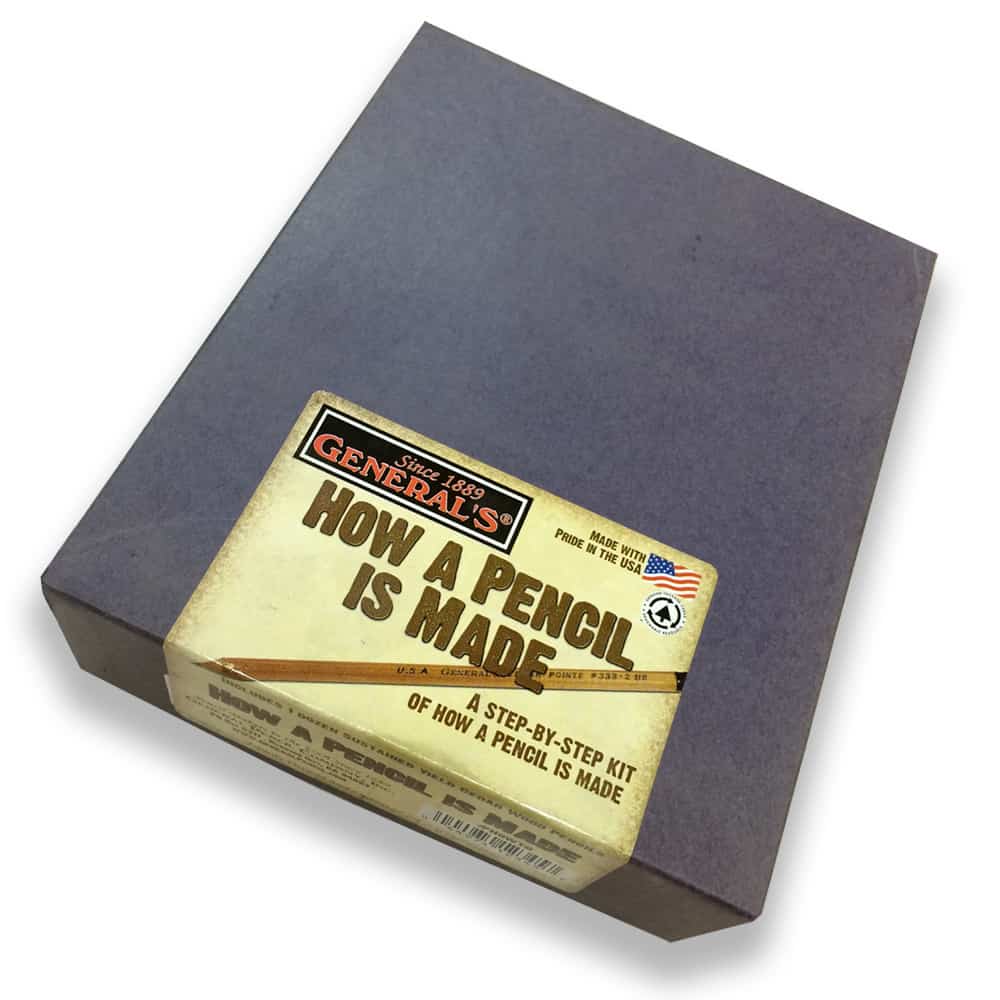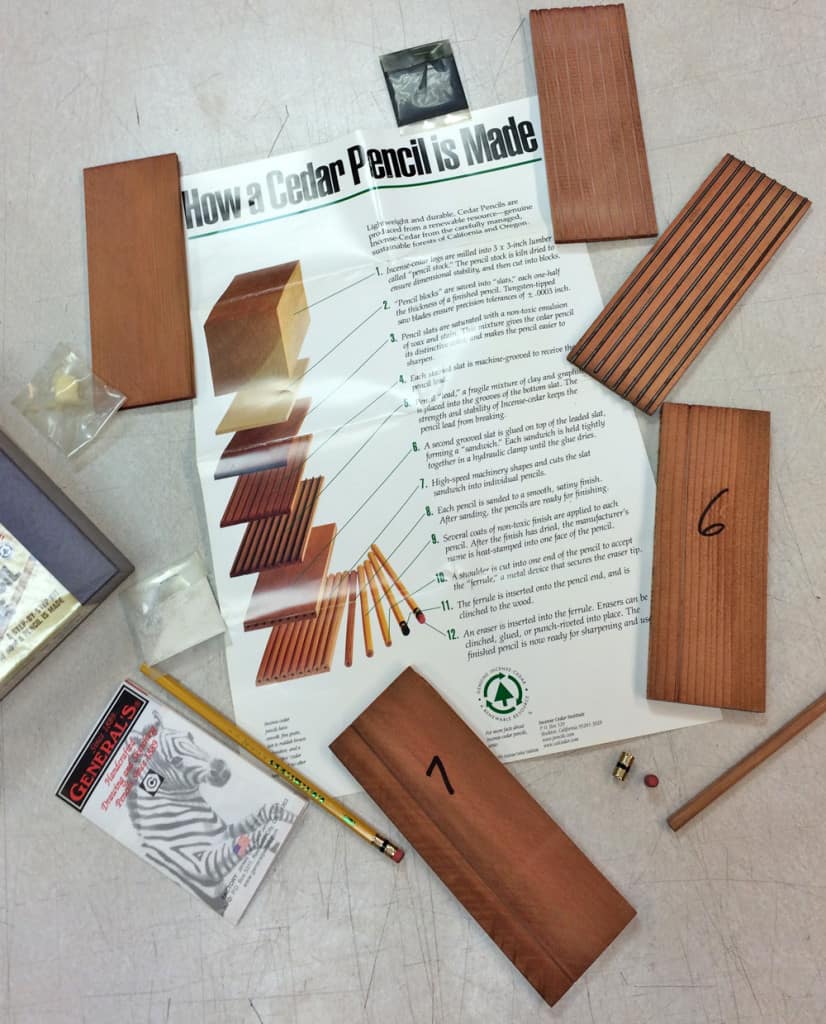Have you ever thought much about a pencil? It’s one of the simplest tools man has ever created, yet one of the most important. How a pencil is made hasn’t changed much really over time. We see them every day, and some of us still use them on occasion. I do. I love drawing. It’s still high on my list of favorite pastimes.
The average pencil is seven inches long, with just a half-inch eraser – in case you thought optimism was dead.
— Robert Brault
Drawing puts you in a creative state of mind and allows you to daydream and resolve other life concerns. It’s meditative and relaxing. But you’ve got to draw to get results. The reward is in doing. The late great Pablo Picasso once said, “Inspiration exists, but it has to find us working.” So, if you’ve always wanted to learn to draw, then draw. With a pencil, everything you imagine is real. It’s that simple.
So, having said that (back to the subject at hand)… I was chatting with a friend of mine, James, from Desert Art Supplies here in Las Vegas, and the subject of pencils came up. James knows I love to draw and that I am a geek of sorts about many things and how they are made (sure, I admit it). James mentioned this kit they had stored away – an illustrated step-by-step kit of how a pencil is made. Today, he shared that kit with me, and I immediately thought, “This is cool – I should share this with my readers.” This “old school” kit perfectly shows how information was shared before computers and the internet. So, in like mind, I’m sharing it with you here…
HOW A CEDAR PENCIL IS MADE
Courtesy of General’s ® ~ since 1889
Lightweight and durable, Cedar Pencils are made from a renewable resource — genuine incense cedar from California and Oregon’s carefully managed, sustainable forests.
- Incense-cedar logs are milled into 3 x 3-inch lumber called “pencil stock.” The pencil stock is kiln-dried to ensure dimensional stability and then cut into blocks.
- “Pencil blocks” are sawed into “slats,” each one-half the thickness of a finished pencil. Tungsten-tipped saw blades ensure precision tolerances of +- .0003 inches.
- Pencil slats are saturated with a non-toxic emulsion of wax and stain. This mixture gives the cedar pencil its distinctive color and makes the pencil easier to sharpen.
- Each stained slat is machine-grooved to receive the pencil lead.
- Pencil “lead,” is a fragile mixture of clay and graphite, is placed into the grooves of the bottom slat. The strength and stability of incense cedar keep the pencil lead from breaking.
- A second grooved slat is glued on top of the leaded slat, forming a “sandwich.” Each sandwich is held tightly together in a hydraulic clamp until the glue dries.
- High-speed machinery shapes and cuts the slat sandwich into individual pencils.
- Each pencil is sanded to a smooth, satiny finish. After sanding, the pencils are ready for finishing.
- Several coats of non-toxic finish are applied to each pencil. After the finish has dried, the manufacturer’s name is heat-stamped into one face of the pencil.
- A shoulder is cut into one end to accept the “ferrule,” a metal device that secures the eraser tip.
- The ferrule is inserted onto the pencil end and is clinched to the wood.
- The eraser is inserted into the ferrule. Erasers can be clinched, glued, or punch-riveted into place. The finished pencil is now ready for sharpening and use.
Credit where credit is due… much of this post was re-purposed from an old poster and step-by-step from General’s Pencil Company.
 Visit General Pencil Company online at GeneralPencil.com.
Visit General Pencil Company online at GeneralPencil.com.
The pencil is the seed from which all great ideas spring.
— General Pencil Company
In celebration of 125 years of pencil-making in the USA, General Pencil Company is featured in an independent short film by Malcolm Hardiman and Ryan Padgett of Salt and Pepper Creative.
• • • • •
ARTWORKS | SHADES OF GRAY | PENCIL
- About the Author
- Latest Posts
- More info
A.D. is an artist who started drawing at a young age. Throughout his life, he has worked with different creative tools in traditional and digital art and design. His art and writings have been showcased in various publications such as Airbrush Action Magazine, Airbrush Magazine, American Art Collector, Art & Beyond, Dream To Launch, Easyriders, Las Vegas City Life, Las Vegas Weekly, L’Vegue, ModelsMania, Quick Throttle, and The Ultimate Airbrush Handbook.






 Chinese (Simplified)
Chinese (Simplified) Dutch
Dutch English
English French
French German
German Greek
Greek Hungarian
Hungarian Irish
Irish Italian
Italian Japanese
Japanese Portuguese
Portuguese Russian
Russian Spanish
Spanish